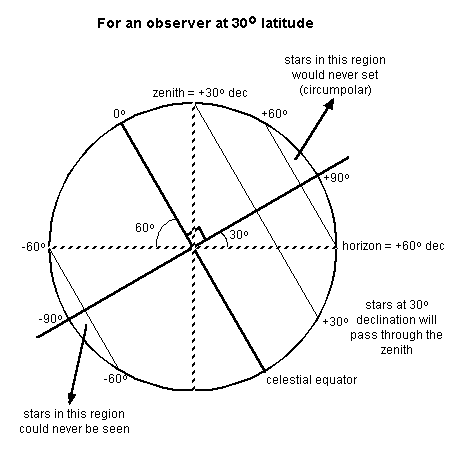
The Celestial Sphere

The altitude of the North celestial pole (North star - Polaris) is equal to your latitude and the altitude of the celestial equator is equal to 90o - your latitude. If the angle between the ecliptic and the celestial equator is 23.5o, what would be the meridian altitude of the sun on for an observer at 30o latitude on
March 21?
June 21?
September 22?
December 21?
Answer the following questions for an observor at our latitude. You may find first filling in this celestial sphere diagram helpful
1. Our latitude:
2. altitude of North celestial pole?
3. altitude of celestial equator?
4. The meridian altitude of the sun on for us on
March 21?
June 21?
September 22?
December 21?
5. Azimuths where celestial equator crosses the horizon:
6. General azimuth of the sunrise on
March 21?
June 21?
September 22?
December 21?
7. General azimuth of the sunset on
March 21?
June 21?
September 22?
December 21?
8. If the sun rises 10o from due east on a day in January, what is the sunrise azimuth?
9. If the sun sets 12o from due west on a day in August, what is the sunrise azimuth?
10. If at 8:00 PM a star crossing your meridian has an R.A. of 4 h, what would be the R.A. of a star crossing the meridian at 1:00 AM?
11. What is the range of declinations of stars that can never be seen at this latitude?
12. What is the range of declinations of stars that are circumpolar?